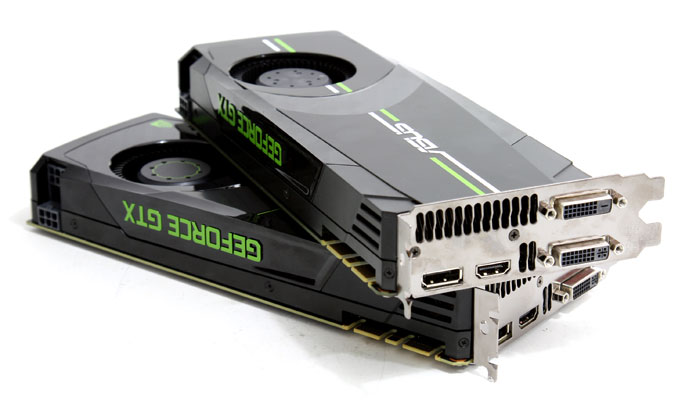Introduction

GeForce GTX 680 SLI gets tested
Hey now ya'll -- before we start, we recommend you to read the standard reference GeForce GTX 680 review first so you know a little better what products we use in this additional Guru3D.com review.
Ever since the GeForce GTX 400/500 series we have seen some impressive increases in performance scaling when it comes to multi-GPU setups, in NVIDIA's case we obviously are talking about SLI performance. In the most high-end segment we more often notice some CPU limitation (processor bottleneck) here and there. That means with current generation processors like Sandy Bridge(E) with 3-way SLI for example, your GPUs might want to go a little faster, but the CPU is holding them back.
We always think it makes more sense to get two products in SLI multi-GPU mode as in theory the SLI performance should remain optimal, especially at monitor resolutions of 1920x1080/1200 and below.
Today we'll put that to the test with NVIDIA's new GeForce GTX 680, we place a reference GTX 680 graphics card alongside an ASUS GeForce GTX 680, yes that is possible these days. We mix two different boards, both cards are running at reference clock frequencies to keep things objective of course, and so we'll see how well SLI performance behaves.
So if your wallet allows it, you can double up that shader count and thus performance with the help of NVIDIA's SLI technology. Multi-GPU gaming surely has grown to become more popular over the past few years thanks mostly to NVIDIA's SLI solutions initially, and obviously later on AMD's ATI CrossfireX joined that path as well.
Over the next few pages we'll tell you a bit about multi-GPU gaming, the challenges, the requirements and of course a nice tasty benchmark session. We'll have a peek at temperatures, power consumption and overclocking of the GeForce GTX 680 cards in SLI mode to squeeze out every last ounce of performance.
Have a peek at the products being slammed and spanked today, and then let's start up this article.

